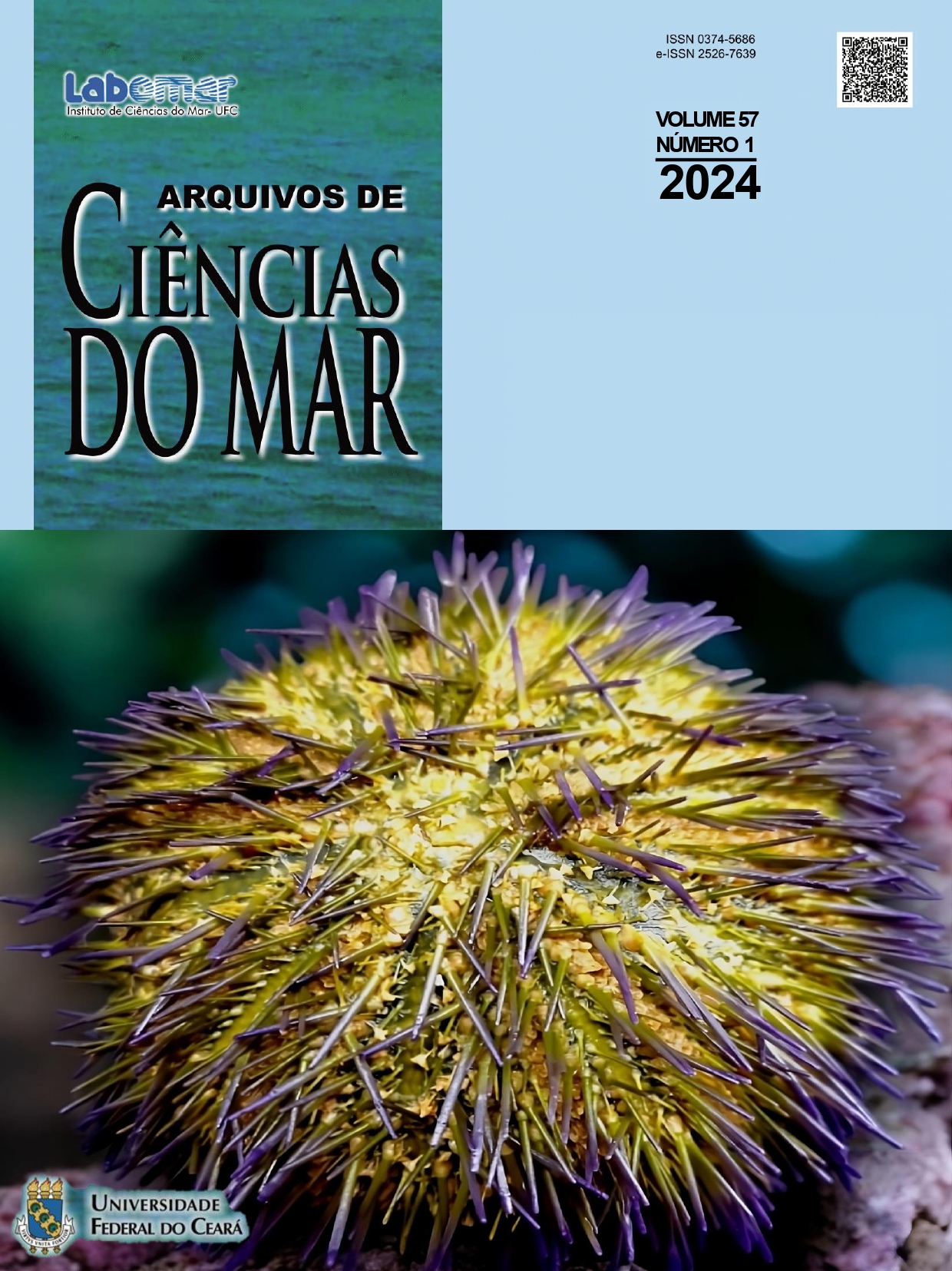GAMETOGENIC CYCLE OF Lytechinus variegatus (LAMARCK, 1816) (ECHINOIDEA: TOXOPNEUSTIDAE) IN NORTHEASTERN BRAZIL
Ciclo gametogênico de Lytechinus variegatus (Lamarck, 1816) (Echinoidea: Toxopneustidae) no Nordeste do Brasil
DOI:
https://doi.org/10.32360/acmar.v57i1.93424Abstract
Some reproductive aspects of Lytechinus variegatus were described including sex ratio, gonad index (GI) and histological examination of the gonads. Ninety individuals (63.44 mm ± 6.17) were sampled from March 2017 to January 2018 randomly collected by hand at Enseada da Ribeira (municipality of Salvador, northeastern Brazil: 12º54'488''S, 38º29'872''W). The sex ratio did not differ from 1:1 and the GI showed no significant differences (p>0.05) for both sexes. Males and females continuously release its gametes, presenting a greater reproductive effort during the dry and warmer periods of the year. A wide range of food supply for the individuals guarantees the maintenance of the long reproductive period. Immediate metabolic expenditure may explain the lack of variation in GI, as gonads are not storage organs in this species. L. variegatus populations present variability in strategies for using and allocating energy resources in response to environmental interactions in situ, regardless of latitude. Along the Brazilian coast, an inverse relationship is observed between oocyte size and the effort devoted to reproduction in different populations of this species. Quantitative oogenesis evaluations over time are assertive analytical techniques for assessing the reproductive cycle of echinoids.
Keywords: Lytechinus variegatus, sea urchin, histology, reproductive cycle, gonadal index, cytometric analysis
Downloads
Downloads
Published
How to Cite
Issue
Section
License
Copyright (c) 2024 Arquivos de Ciências do Mar

This work is licensed under a Creative Commons Attribution 4.0 International License.
1. Proposta de Política para Periódicos de Acesso Livre
Autores que publicam nesta revista concordam com os seguintes termos:
- Autores mantém os direitos autorais e concedem à revista o direito de primeira publicação, com o trabalho simultaneamente licenciado sob a Licença Creative Commons Attribution que permite o compartilhamento do trabalho com reconhecimento da autoria e publicação inicial nesta revista.
- Autores têm autorização para assumir contratos adicionais separadamente, para distribuição não-exclusiva da versão do trabalho publicada nesta revista (ex.: publicar em repositório institucional ou como capítulo de livro), com reconhecimento de autoria e publicação inicial nesta revista.
- Autores têm permissão e são estimulados a publicar e distribuir seu trabalho online (ex.: em repositórios institucionais ou na sua página pessoal) a qualquer ponto antes ou durante o processo editorial, já que isso pode gerar alterações produtivas, bem como aumentar o impacto e a citação do trabalho publicado (Veja O Efeito do Acesso Livre).

